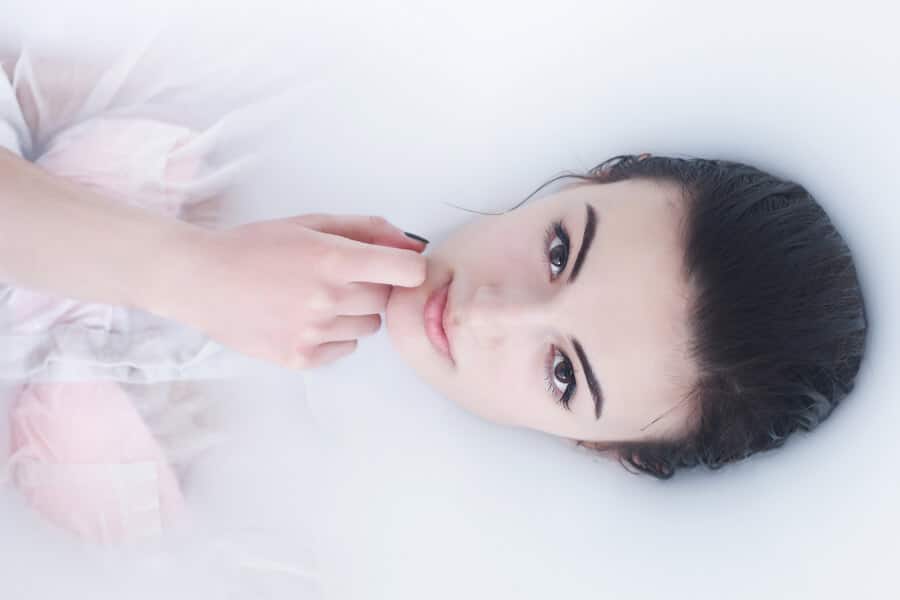
Laser hair removal is one of the most efficient methods for achieving hair-free skin. It normally requires multiple sessions to ensure up to 90% permanent hair reduction, but once you have completed the recommended number of treatments, you will no longer have to shave or wax regularly.
Whether you’re interested in undergoing laser hair removal or you just finished your first session, you’re probably wondering exactly what you can expect after each laser treatment.
What can I do to help ease my recovery? When will it grow back? Read on to find answers to some of the most common questions often asked by people who are interested in laser hair removal.
How Does It Work?
Laser hair removal procedures involve using laser light pulses to destroy hair follicles. It does this by targeting the melanin in your hair follicle and damaging it enough to halt growth. You will normally be required to receive treatments in the next four to six weeks so as to target every hair strand in its growth phase until the hair stops growing permanently.
Because lasers target the melanin in hair follicles, laser hair removal work best on patients with light skin and coarse dark hair. However, newer laser technologies like the Palomar Icon™ XD Aesthetic System are able to produce safe and effective results on other hair and skin tone combinations.
Laser Hair Removal vs. Traditional Methods
Before laser technology became widely available, most people relied on temporary methods such as shaving, waxing, or depilatory creams to remove unwanted hair. While these methods can be effective short term, they come with limitations:
- Shaving: Quick and inexpensive, but the results last only a few days. Hair often grows back with blunt ends, appearing thicker.
- Waxing: Offers smoother results that can last three to six weeks, but it’s painful and can cause irritation or ingrown hairs.
- Depilatory Creams: Dissolve hair at the surface but can irritate the skin and provide only temporary results.
Laser hair removal stands out for its precision, longevity, and convenience. It targets the root of the hair follicle, offering smoother and longer-lasting results without frequent maintenance or discomfort.
Key Benefits of Laser Hair Removal
Patients choose laser hair removal for several important reasons:
- Prevents Ingrown Hair: By targeting follicles directly, laser treatments help eliminate and prevent painful ingrown hairs that can result from shaving or waxing.
- No Hair Growth Needed Between Sessions: Unlike waxing, you don’t need to wait for regrowth before your next treatment. Shaving before your session is encouraged to prevent surface hair from burning.
- Quick and Efficient: Laser pulses can treat small areas like the upper lip in under a minute, while larger areas such as the back or legs can be treated in less than an hour.
- Precise and Safe: The laser targets only the hair follicles, leaving surrounding skin unharmed, which reduces irritation and discoloration.
- Cost-Effective in the Long Run: Although the initial cost may be higher, fewer sessions and lasting results make it a smart investment over time compared to regular waxing or shaving.
What to Expect After Laser Hair Removal
During the treatment, patients typically feel a stinging, prickling, or burning sensation on parts that are being treated, like a rubber band snapping against the skin. With the Palomar Icon™ XD, these sensations are significantly minimized thanks to the machine’s patented Advanced Contact Cooling feature, which helps maintain the temperature at 5° Celsius to ensure your comfort and to protect your skin during treatment. Additionally, a topical numbing cream can be used prior to the session to further alleviate any unwanted sensations.
Once the session is over, you may feel some residual discomfort (which is both minor and temporary). This is easily managed with ice packs, cold water, and anti-inflammatory creams or lotions.
In the next few weeks, you should notice slower or reduced amount of hair growth, as well as smoother skin with the absence of stubble.

Side Effects of Laser Hair Removal
Like any other treatment, laser hair removal may cause a few minor side effects. These include the following:
Redness or Itchiness
It’s completely normal to experience some skin irritation right after each laser hair removal session. Depending on your skin’s sensitivity, you may experience some residual itchiness, discomfort similar to razor burn, and skin redness that may persist for the next 24 hours. You will be advised to apply a cold compress and moisturizers to the treated areas. If the irritation lasts longer than 24 hours and you experience any blistering, contact your doctor.
Changes in Skin Tone
Other possible side effects include hyperpigmentation (darkening of the skin) and hypopigmentation (lightening of the skin) after undergoing treatment. This is because the laser can stimulate or inhibit the production of melanin, causing your skin to either produce too much or less pigment.
Hair Shedding
You’ll immediately notice less hair growth one to three weeks after your first treatment. The treated area will be shedding hair during this time—specifically the affected hairs that were in their anagen or “growing” phase. You can expect to see hair particles that look like blackheads or stubble.
Minor Regrowth
Because laser treatments are only able to target hair follicles that are in their anagen phase, there will be a few remaining follicles that have yet to “wake up” and grow hair in the next few weeks, so don’t be surprised to see some minor regrowth after your initial treatment. Over the next few sessions, more hair follicles will enter their growth phase, so different groups of follicles will be targeted at different times throughout your entire treatment.
Recovery and Aftercare Tips
There are a few things that you will be instructed to do to speed up your recovery after undergoing laser hair removal. These include the following:
Exfoliate
To further stimulate the shedding process, you will be advised to gently exfoliate the treated area with a scrub or washcloth at least thrice a week. This removes any dead skin cells that may be keeping your dead hair follicles from falling out following treatment.
Cut or Shave Regrowth
It’s common to notice some hair regrowth after or in the middle of treatments. However, it’s important that you leave the hairs in their shafts for laser hair removal to work, so avoid plucking or waxing during this time. Instead, you can cut, trim, shave, or use hair removal creams up until two days before your next session.
Use Sunscreen
Once you’ve undergone laser hair removal, it is imperative that you regularly apply sunscreen on treated areas. This is a crucial aftercare measure to ensure that your skin retains its color, as the treatment will make your skin more prone to hyperpigmentation. For maximum protection, use a sunscreen with a sun protection factor (SPF) of 30 or more for two weeks before and after your treatments.
Avoid Certain Skin Products
Apart from sunscreen, it’s best not to apply anything on the treated skin for the first 48 hours after your treatment—especially if undergoing laser treatments on the face. Make sure to avoid makeup, perfumed skin products, and skin care with active ingredients, like vitamin C serums and retinol creams, which can make the skin more sensitive. Some products may have certain ingredients that can irritate your skin, so if you’re not sure what’s in the product, it’s best to stay away from it unless your doctor gives you the green light.
Monitor Your Medication Intake
Before you take any medication, make sure to check with your laser hair removal specialist and healthcare provider about any possible contraindications to your recent treatment. This is particularly important as there are “photosensitive” medications that may make your skin more sensitive to light. Taking these medications while undergoing laser treatments can result in phototoxic reactions—hyperpigmentation that makes the skin look extremely sunburned—or possibly even photoallergic reactions.
When Will It Grow Back?
Complete, permanent hair removal isn’t guaranteed since results vary depending on your hair color, skin tone, and treatment area. However, each session can reduce hair growth by 10–25%, and most patients achieve up to 90% reduction after six to eight sessions.
Some maintenance treatments may be needed every few months to sustain results.
Why Choose Dr. Jacob Sedgh
Laser hair removal should always be performed by a qualified medical professional to ensure the best outcome. As a double board-certified facial plastic surgeon, Dr. Jacob Sedgh has years of experience in both surgical and non-surgical aesthetic procedures.
Patients can schedule an in-office or virtual consultation to discuss treatment goals, assess their skin and hair type, and develop a personalized plan for lasting, safe results.
Ready to Enjoy Smoother, Hair-Free Skin?Schedule your laser hair removal consultation with Dr. Jacob Sedgh in Los Angeles today. Schedule consultation today.
Posted on behalf of Sedgh Plastic Surgery